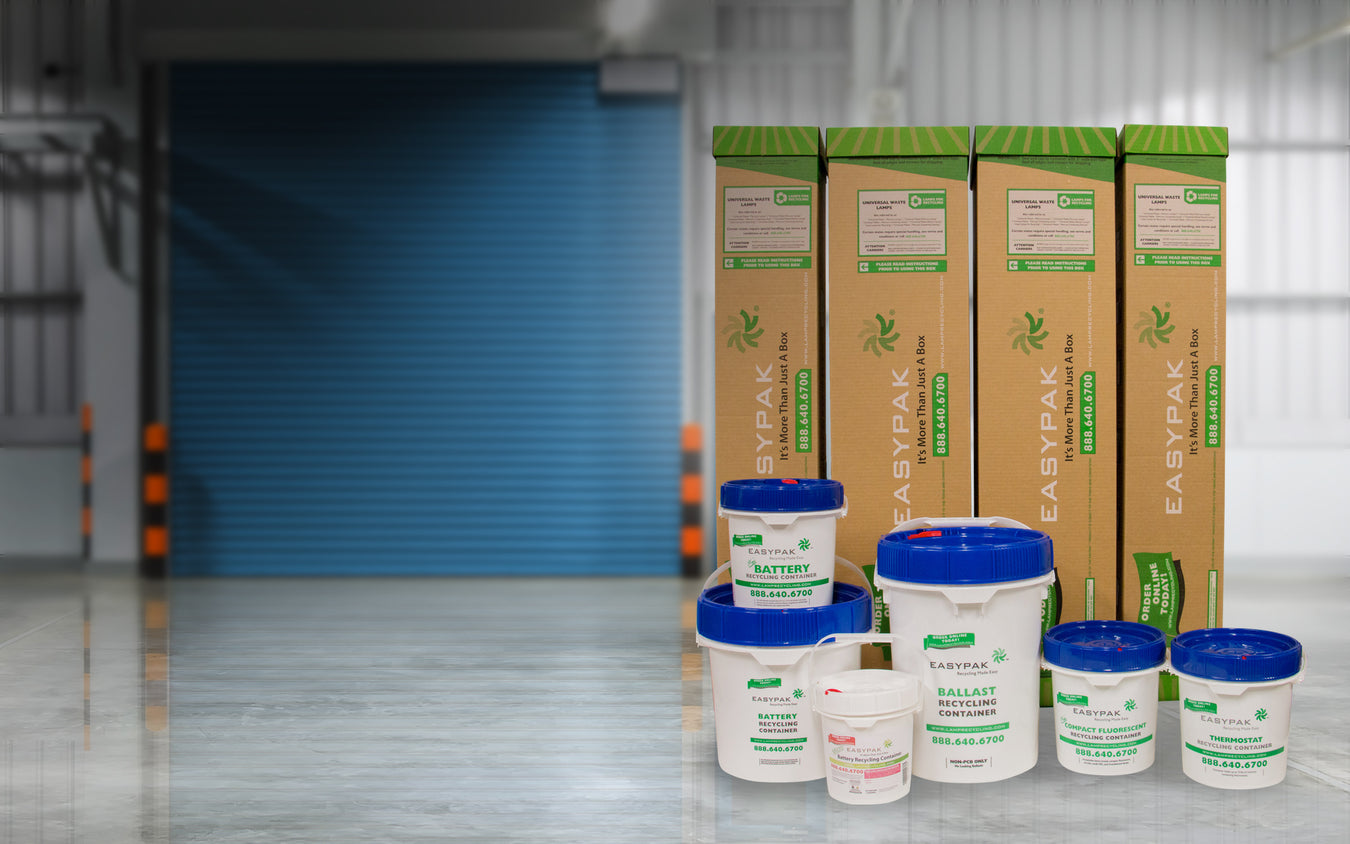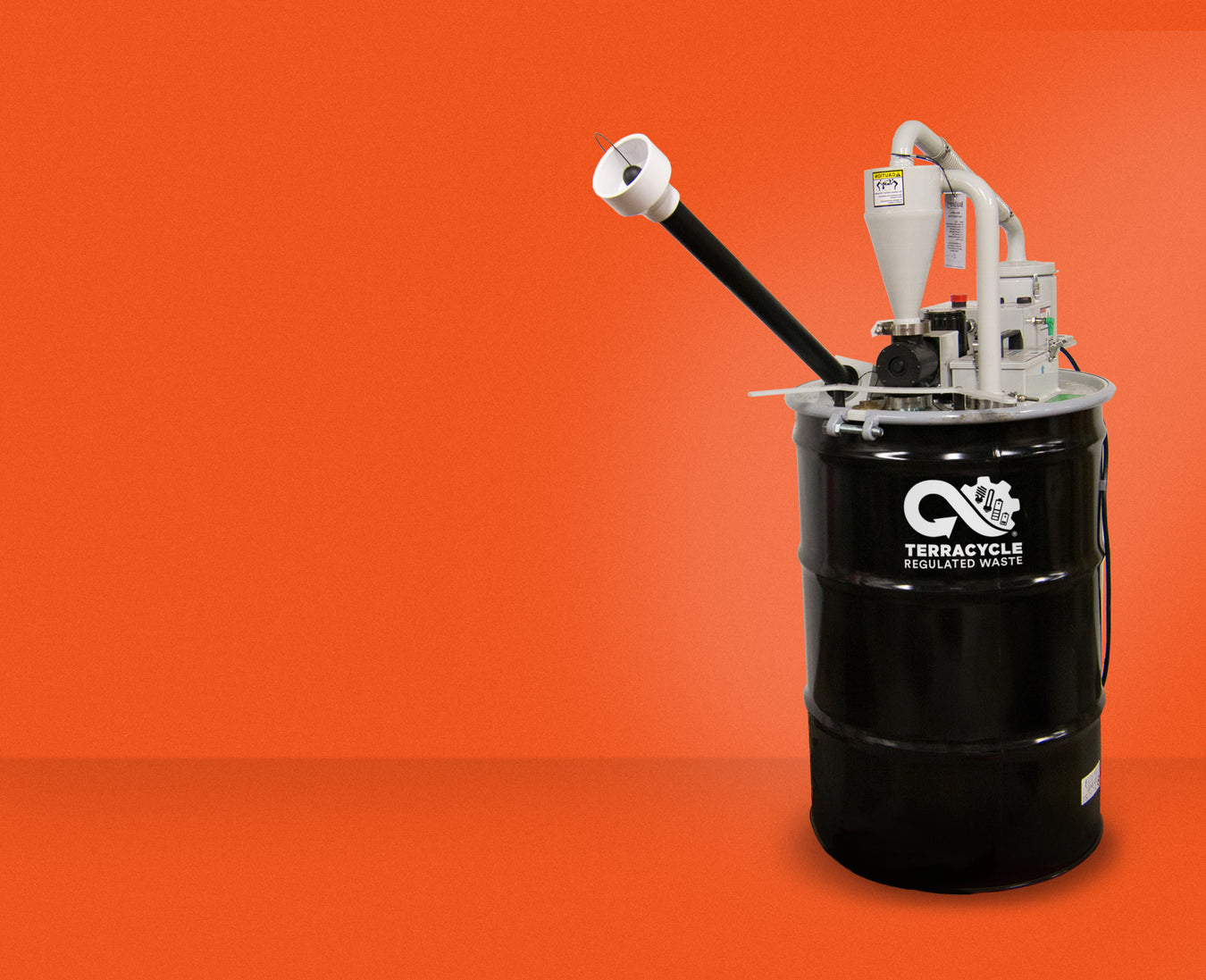
Recycling guarantees all of your hazardous and universal waste will be properly recycled by EPA-compliant U.S. recycling facilities. Here are a few other reasons why is it important to recycle:
Legal Requirements:
- Many states require lamp recycling and proper disposal of ballasts, batteries, and electronic waste by law. Make sure you are compliant with your state regulations. For official guidance and other tools and resources regarding lamp regulations and recycling, please visit the federal EPA fluorescent lamp website.
- Due to the Federal Environmental Protection Agency's regulation on lamps, which went into effect on January 6th, 2000, most non-residential facilities are now required by law to properly dispose of their lamps. Landfills are increasingly intolerant of lamps from non-residential sources due to the amount of mercury found in each lamp. Lamps later found in landfills are subject to retroactive clean-up costs under CERCLA. Recycling of the lamp components is the recommended method of disposal by the Environmental Protection Agency and helps to minimize facility liability.
- Packaging of the lamps coupled with the recycling of the lamps will greatly reduce the mercury dilemma and create a much safer environment.
The Environment:
- Fluorescent lamps contain mercury, and ballasts, batteries, and electronic waste can contain mercury, lead, metals, and other materials which have a harmful effect on the environment if not recycled.
- What's in a lamp? A fluorescent lamp consists of a glass shell, a high vacuum, a small amount of liquid mercury and evaporated mercury, some phosphor powder, and the metal end-caps and heated filaments.
- Fluorescent light is produced by passing an electric current through mercury vapor, which generates ultraviolet energy. A phosphor coating on the inside of the bulb transforms the ultraviolet energy into visible light. A single four- foot fluorescent tube contains from 5 to 50 mg. of mercury.
- When lamps are sent to landfills, or especially when incineration is used as an alternative disposal method, mercury vapors are released that can travel over 200 miles! It is highly toxic to the human nervous system and particularly poisonous to the kidneys. Once absorbed by the body, mercury is distributed by the blood to all tissues of the human body, and it easily crosses the placental barrier; prenatal exposure can lead to a variety of health problems including a severe form of cerebral palsy.
- Each year, an estimated 600 million fluorescent lamps are disposed of in U.S. landfills amounting to 30,000 pounds of mercury waste.
- The Environmental Protection Agency reports that 187 incinerators nationwide emit approximately 70,000 total pounds of mercury into the environment each year.
- In 1992, mercury-containing lamps were added to the United States' Environmental Protection Agency's (EPA) list of hazardous substances. (The EPA's regulatory threshold of 2 mg./liter is usually exceeded by mercury-containing lamps).
- Mercury was number three on the 1997 list of hazardous substances as outlined by the Agency for Toxic Substances and Disease Registry (ATSDR) and the EPA.
Recycling is Cost-Effective:
- Over the lifecycle of a fluorescent lamp, the cost to recycle is less than 1% of the cost of ownership. Recycling your lamps and obtaining a certificate of recycling is also a guaranteed way to avoid fines and costly enforcement action which can easily exceed the cost of lamp recycling.
- It is possible to keep mercury out of the air by sending intact lamps to a reputable lamp recycling company, where it is estimated that only 0.2% to 0.4% of the mercury is emitted to the atmosphere.
- Mercury containing lamps are now quite inexpensive to recycle. However, the process still costs more than the recycled content is worth, so users must pay a small fee to have them recycled.
- How small? Over the life cycle of a fluorescent lamp, the cost to recycle today is less than 1% of the cost of ownership, as the bulk of ownership dollars are spent to cover energy costs.
- The estimated breakdown of costs is as follows:
Cost of materials: 3%;
Cost of installation and maintenance: 10%;
Cost of energy consumption: 86%; and
Cost of recycling: 1%.
- Even with these statistics, businesses are hesitant to incur extra costs. This is the greatest barrier to recycling.
- However, states that have passed landfill bans for mercury containing products issue varying levels of penalties for infringement of these regulations.
- Why Recycle? Recycling—and obtaining a certificate of recycling from the recycler—is a guaranteed way to avoid fines and enforcement actions which can easily exceed the cost of lamp recycling.
Recycling is a Green Idea:
- Implementing a lamp, ballast, battery, or electronics recycling program is a simple and practical way to "green" your organization and benefit from resulting positive PR. Recycling universal waste can earn your facility LEED points too.
- Implementing a universal waste recycling program within your organization is a quick and inexpensive step in the sometimes daunting “green” process. Having a recycling program in place can also be good for employee and customer loyalty and morale. Furthermore, recycling all mercury-containing lamps, batteries, and electronic waste can help your facility meet LEED prerequisites, earn points, and achieve certification from the U.S. Green Building Council.
You Can Make a Difference:
- Recycling your lamps and other universal waste is the right thing to do! As the saying goes "every little bit counts" and keeping hazardous waste out of our landfills and reusing natural resources is a big step towards a sustainable world.





